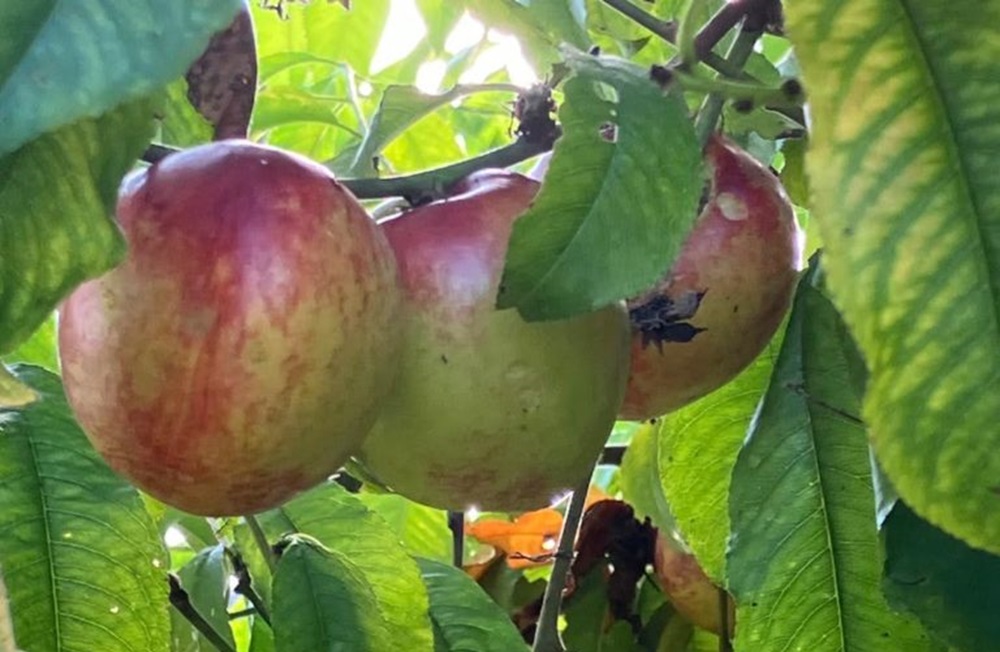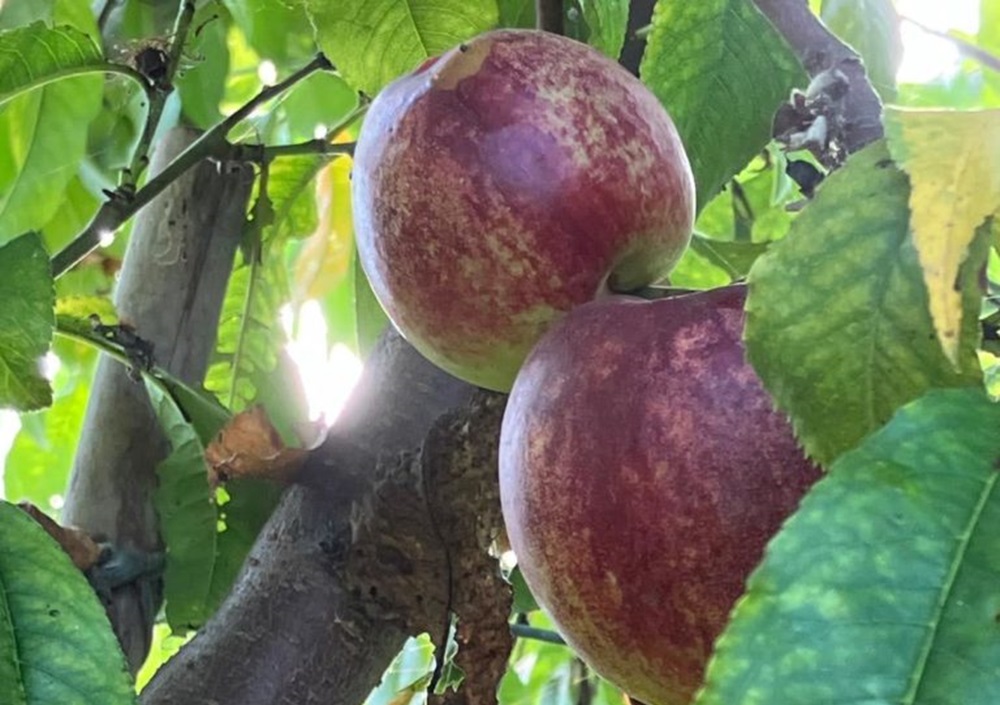Welsh Food Stories: The Peaches of Costa Ceredigion

Carwyn Graves
“I’m a climate-change farmer now,” says Nathan Richards as he gestures towards the grove of Mediterranean stone fruit lining this polytunnel on a hillside above Cardigan Bay. Peaches, nectarines, apricots and cherries make an exotic sight in this field more accustomed over the years to oats, potatoes and peas: “We actually sold over a hundred of our Ceredigion peaches in 20 minutes at the farmers’ market in Newport recently – and that’s as much to do with flavour as it is novelty!”
Though currently still an experimental crop, the peaches of Troedyrhiw may well be a sign of things to come.
Experimentation
“It was because of having to deal with greater extremes as a farmer – in all directions. So we haven’t just been having more and longer droughts and sustained heat, we’ve also had longer spells of endless rain and wet and even some pretty crazy cold spikes and frost in recent years.”
It has been comparatively easy for growers to experiment with different varieties of heat-loving veg – the aubergines, Florence fennel and chillies that are now an important crop on some Welsh veg farms – as they all grow in one season, dying off with cold autumn nights. But fruit trees are by their nature a multi-year investment, requiring time and space in the hope of a return in years to come.
“I felt that we’d better start preparing now for the climate of the future – and to find out what sorts of fruit had the best time in our coastal, West Wales climate.” Initial results, almost ten years in from planting the trees, suggest that peaches, nectarines and indoor cherries hold most promise – with the apricots visibly struggling.
Sold at their market stall, the peaches, nectarines and cherries have been literally fliying off the market stall along with more traditional fruit like currants, strawberries and raspberries “They’ve been really popular – and we’ve had some lovely feedback on our stone-fruit experiment!”
For all his enthusiasm about these trials, Nathan is still very aware that to scale up production would take significant infrastructure and investment which can be a gamble. However, he believes now is the time that we should be experimenting and investing in this further diversification of what we grow in our changing climate, and with geopolitical risks all around and their impact on supply chains.

Back to the future?
As with grapes and wine, this is not the first time that growers and gardeners in Wales have pushed the boundaries and introduced new crops from warmer climes. There has been a long history of experimentation in fruit growing in Wales, with brave enterprises in the 17th century branching out into everything from pineapples and melons to figs and even oranges (most famously in the Orangery at Margam Park, near Port Talbot).
And in fact, commercial greenhouse production of peaches isn’t even a first in the counties of West Wales, with records from market gardens outside Carmarthen in the 1890s confirming cultivation of peaches there, and other stone fruit (including cherries) commercially in the Teifi valley in the 1810s.
Those past experiments didn’t ultimately fail because the crops were so badly unsuited to our context; it was the growth of cheap imports that could arrive fresh from Empire colonies and elsewhere that led to the demise of serious efforts to grow the widest possible range of fruit and vegetables at home.

Motivation
Any farmer has to make a return on their crops – but it isn’t hard to feel these days, with the awful margins and insecurity inherent in the enterprise – that many of our most enterprising producers and growers are driven more by passion and concern for the future than by profit. This strikes home in conversation with Nathan about his delectable nectarines; he’s clearly more interested in discovering what can work, and producing good food for those around him than in the (rather remote) possibility of any meaningful financial return on his cropping experimentation.
With growing concern about the impact of UPF products on our health, shockingly high levels of food insecurity in Wales in the wake of the cost-of-living crisis, and farmer protests over an unworkable food system, a mouth-watering, sun-warmed Ceredigion peach eaten unwashed from the tree in late summer feels like the glimmer of a promise of better things to come.
This is part of a monthly series on Nation.Cymru on the diversity of Welsh food culture by Carwyn Graves.
Support our Nation today
For the price of a cup of coffee a month you can help us create an independent, not-for-profit, national news service for the people of Wales, by the people of Wales.




